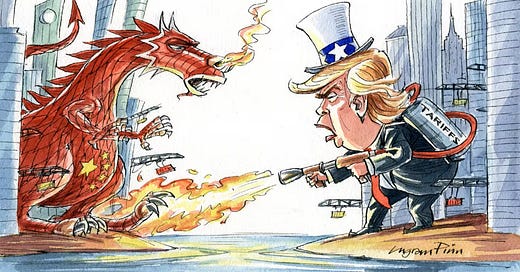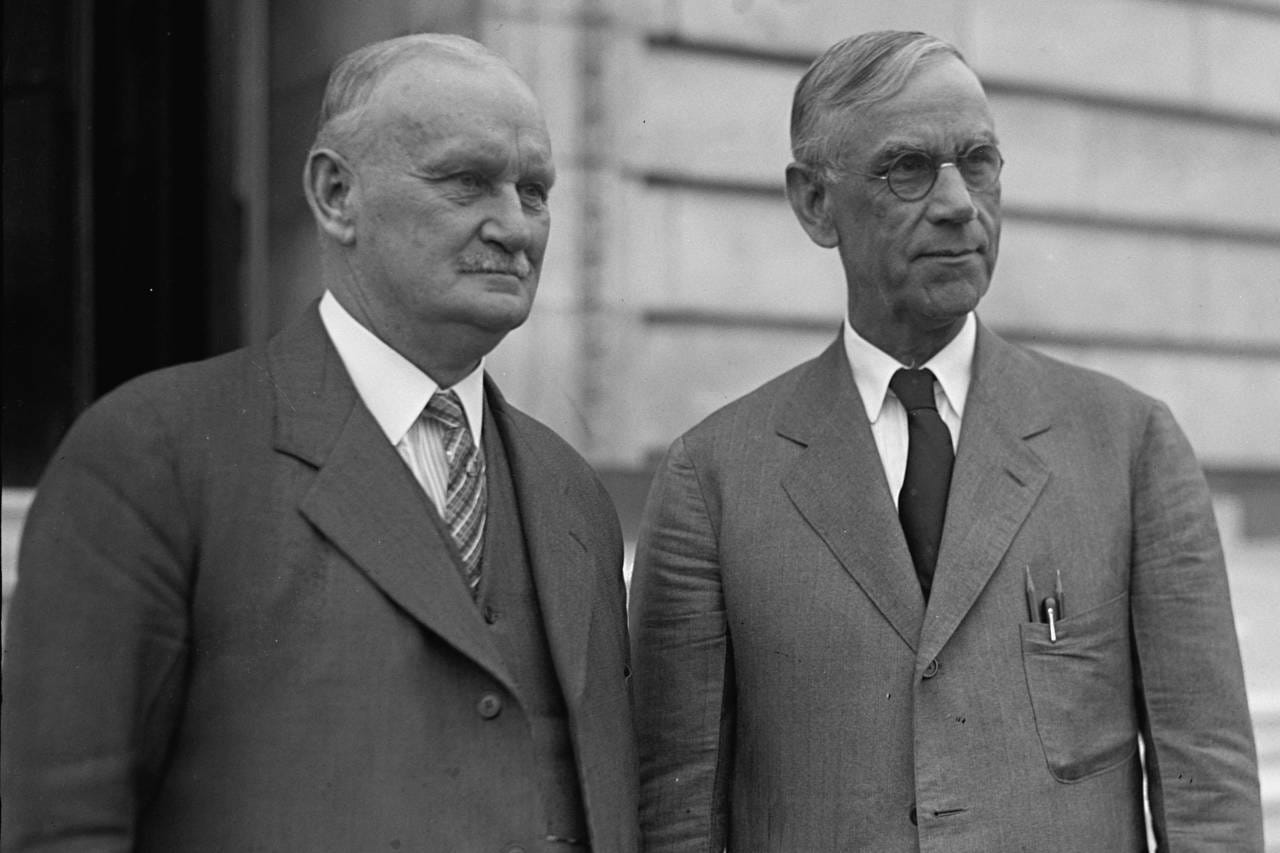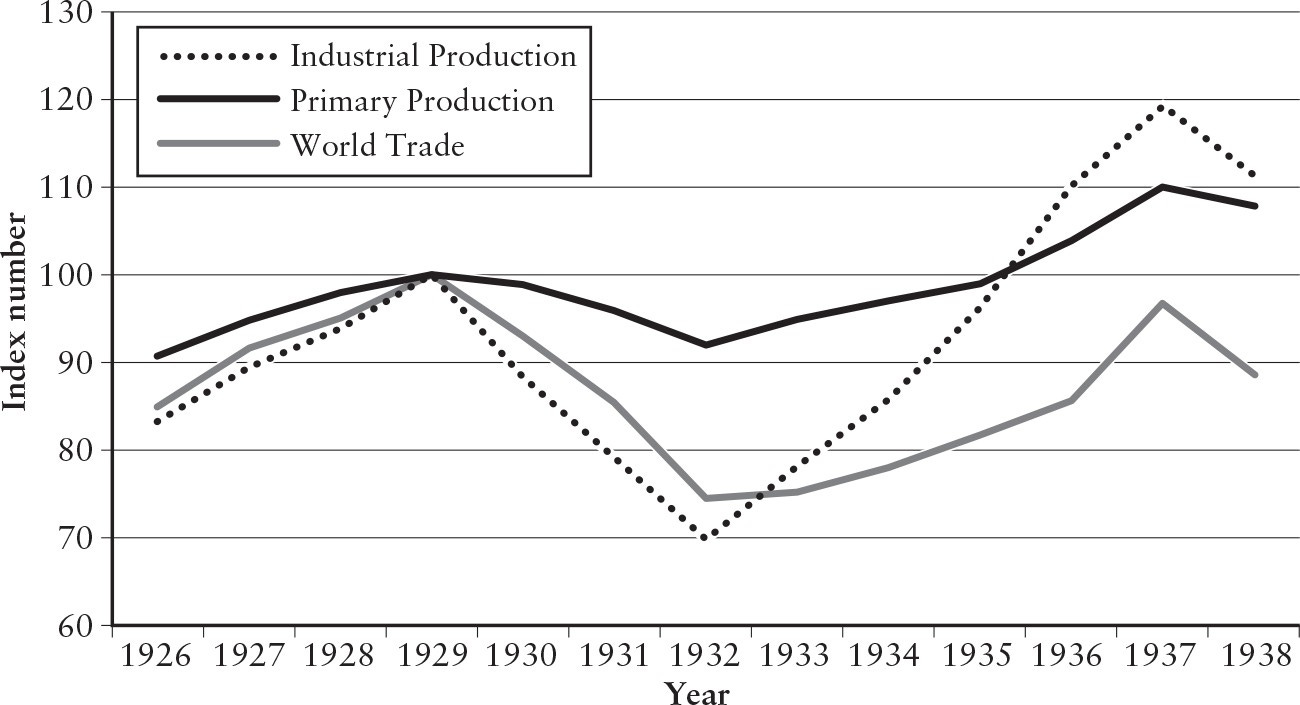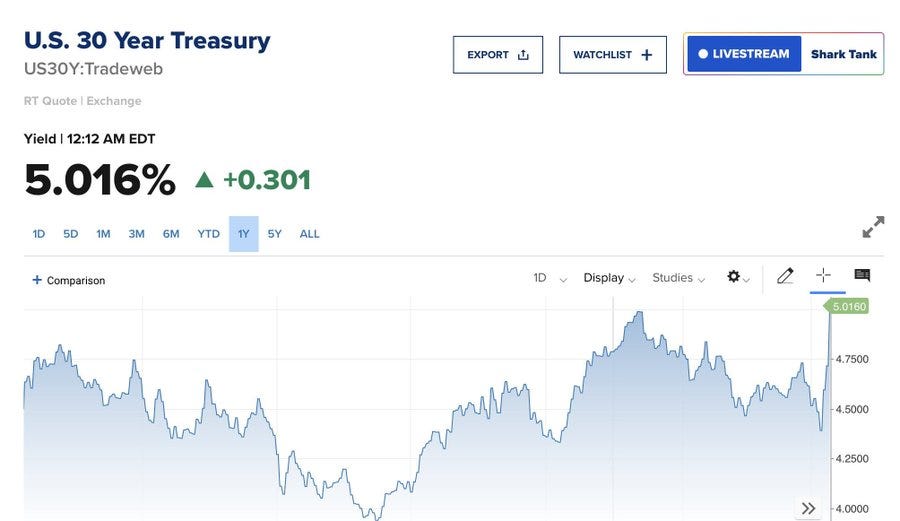As George Santayana said, “Those who cannot remember the past are condemned to repeat it”. But the irony is, we learnt from history that we don’t learn from history. If we can read the above two statements again and wrap our head around it, our current political and economic environment makes sense. We have been here before, countries zooming ahead full throttle on the protectionist path, leading to a vicious downward spiral of “Beggar Thy Neighbour” policies. The most prominent and pertinent of these was a century ago, when the United States took the lead then, as today by implementing the Smoot-Hawley Act of 1930. While historians still debate its impact, there is enough evidence that, it did play an important role in leading us deeper into The Great Depression, a World War and the most disruptive and destructive period in modern history.
The anxiety of domestic constituents losing out and the clamour for protection reared its ugly head again in the 1980’s, when Japan then, like China today was perceived to be a serious threat to American interests and prosperity. Murray N. Rothbard summed it up nicely in an incisive article written in 1986:
“Protectionism, often refuted and seemingly abandoned, has returned, and with a vengeance. The Japanese, who bounced back from grievous losses in World War II to astound the world by producing innovative, high-quality products at low prices, are serving as the convenient butt of protectionist propaganda. Memories of wartime myths prove a heady brew, as protectionists warn about this new “Japanese imperialism,” even “worse than Pearl Harbor.” This “imperialism” turns out to consist of selling Americans wonderful TV sets, autos, microchips, etc., at prices more than competitive with American firms.”
Last week, amidst much drama and fanfare of the MAGA crowd, Donald Trump unveiled his “Liberation Day” reciprocal tariffs, an outcome of calculations done by retarded brains, with the economic intelligence of a toad. China immediately retaliated with their own tariffs and limiting supply of critical elements. Is the world set to repeat this experience of 1930’s? The names of Smoot and Hawley are being mentioned often as a cautionary tale about the dangers of protectionism. Reed Smoot was a Senator from Utah and Willis Hawley was a Representative from Oregon. Together they were responsible for the Tariff Act of 1930, in which the United States increased import duties just as the world was tipping into Depression after the stock market crash of 1929. The Smoot- Hawley tariff has gone down in history as an example of what not to do in an economic crisis. Let us hope that some sanity prevails, and we don’t tread that treacherous path, where such a monumental policy mistake was made.
In a world ravaged by World War I, trade policy was a source of international friction and mutual recrimination. Given the precarious demand situation around the globe, American farmers who were major food exporters struggled with competition and lower prices for their produce, and the low global prices were a result of over-production. For America, the 1920’s was “The New Era”, where progress and prosperity were given, and the living standards and incomes of average person saw compounded growth. During this period, which eventually came to be known as the “Roaring Twenties”, the US economy had made exceptional gains in productivity driven by technological progress. One of the main contributors was electrification, which led to massive increase in factories and mass production. At the same time, there was a huge surge in US oil production and refining capacity, which led to mass adoption of automobiles, which in turn replaced horses and mules. One-sixth to one-quarter of the country’s farmland that had been devoted to feeding horses and mules was freed up, contributing to a surplus in farm produce. America was a net exporter of agricultural products and given the global conditions, it was inevitable that the prices would fall,
In the 1920’s, the focus of American trade policy shifted towards protecting agriculture. Congress struggled to find the right way to assist farmers and relieve farm distress, turning their guns on tariffs after President Coolidge vetoed price-support legislation. The Americans fired the first shots of protectionism with the passage of the Smoot–Hawley Tariff Act in 1930. Named after its chief congressional sponsors, Senator Reed Smoot and Representative Willis C. Hawley, the act raised tariffs on over 20,000 imported goods in an effort to shield American industries from foreign competition during the onset of the Great Depression, which had started in October 1929 after the stock market crash.
The origins of the Act went back to the 1928 presidential election, where the plight of agriculture formed as an important backdrop. The Republican candidate Herbert Hoover campaigned for tariffs to protect American farmers from the worldwide collapse of commodity prices. Hoover did not intend higher tariffs to apply to industrial goods, but as his campaign gained momentum, it took on a life of its own and his initially modest proposals were widened. Support for protection rested on the belief that it was fundamental to American prosperity, preventing competition from foreign suppliers with low wages, and offering employment and the higher standard of living. According to the Republican propaganda, everyone gained, with American farmers getting access to good markets for their foodstuffs and raw materials, while the industrialists could target affluent consumers, and foreigners benefitted from the prosperity of the American market.
After Hoover won the presidential election, 1929 saw the great market crash and the resulting agony for the economy. Taking advantage of the situation, Congress turned to the revision of duties and broaden the scope as the boom of the 1920s gave way to depression. The Smoot–Hawley Tariff Bill was introduced in the congress in an atmosphere of crisis and though the voting for the bill was mostly along party lines, there were many instances, where support for individual duties was influenced by local economic interests, with members of Congress scratching each other’s back and making deals to support their causes. The Smoot–Hawley Bill only passed the congress by a narrow margin and President Herbert Hoover signed it into law on June 17, 1930. There was vehement opposition to the law from across the country. It was signed against the advice of as many as 1000+ economists and of leading industrialists and financiers of the age with international business interests, such as Henry Ford and Thomas Lamont of JP Morgan. Though a free trade advocate by disposition who felt the duties were excessive, Hoover’s political instincts kicked in and he realized that using the presidential veto would have been politically difficult at a time when the American economy was facing serious problems.
And why do we still remember this almost hundred-year-old act and why are people remembering it and reminding of it in these times of Trump’s reciprocal tariffs? Because it ranks among the most infamous pieces of American legislation of the twentieth century. Senator Smoot contended that raising the tariff on imports would alleviate the overproduction problem, but the market reality was that the United States had been running a trade account surplus. Although manufactured goods imports were rising, manufactured exports were rising even faster. Food exports had been falling and were in a trade account deficit, but the approximate values of food imports only amounted to half the value of manufactured imports. Although imports were not surging into the country or causing any great problem for the economy, Congress raised tariffs on imported goods with the intention of protecting farmers and manufacturers from what little foreign competition they faced. In doing so, they did not follow any economic logic or consider the interests of consumers and exporters who would be harmed by the tariffs. Instead, they engaged in the most blatant form of pork-barrel politics, catering to the demands of special interests that wanted to limit imports. The tariff was initiated near a business cycle peak when business was good, not in the midst of the Depression, and it was poorly suited to help farmers, many of whom depended on exports to foreign markets. The manner in which Congress handled the tariff gave rise to accusations of colluding with special interest lobbies and logrolling, which unfortunately was the truth.
The contribution of the Smoot-Hawley tariff to the collapse of trade and the Great Depression of the 1930s has been debated ever since. The popular perception is that the Smoot-Hawley tariff raised import duties to record levels and helped cause the Great Depression. In fact, the legislated tariff increase was much smaller than commonly imagined, but it still managed to erase 15 percent of America’s imports when it was implemented. But the real kick in the gut for the economy was the deflation of prices that accompanied the Great Depression that pushed the tariff to near record levels, restricting trade even more. While the jury is till out on whether the Smoot-Hawley tariff played a large role in the macroeconomic contraction experienced during the Depression, it definitely play a major role. Among other important factors, a series of monetary and financial shocks pushed the economy into a downward spiral, with the tariffs adding fuel to the fire.
In a situation like this, how did the stock market react? Foreigners started withdrawing capital from the stock market and millions of investors incurred heavy losses when the market crashed. Soon, imports became overly expensive, making it tougher for the jobless to buy anything other than domestic goods. While the stock market had already crashed in 1929, the year before Smoot-Hawley was signed into law, the tariffs deepened the depression, sending stocks even lower. The market would not recover until years later as trade tensions eased, and FDR’s New Deal kicked in.
Not surprisingly, as we are seeing today, several countries, great powers of the time, Great Britain, France and Germany along with Canada retaliated by imposing duties on US exports. These trade restrictions spread just as the world economy was beginning to sink into a depression. The tariff backfired by triggering retaliation against US exports and the spread of trade blocs that discriminated against the United States, inflicting long-term damage for the US commercial and foreign policy interests. While many countries were not vocal and it was not overtly obvious that they were retaliating against America for imposing the tariff, the nature and timing of the measures they took strongly suggest that as the primary motivation. A month after the Smoot-Hawley tariff was imposed, a pro-American Liberal government in Canada lost a general election to the pro-British Conservatives, who erected trade barriers designed to shift Canada’s imports from the United States to Britain.
Other countries discriminated against US exports as well, and the nation’s share of world trade fell sharply. In the three years after the Smoot-Hawley tariff was enacted, protectionist trade measures proliferated, world trade collapsed, and the Depression intensified around the world. Smoot-Hawley tariff was very damaging from the standpoint of US commerce because it led other countries to pursue trade policies that explicitly discriminated against the United States. This discrimination was much more harmful to US exports than simply the rise in foreign trade barriers because it diverted existing trade away from the United States and gave it to other countries. In addition, Smoot-Hawley damaged the economies of neighbouring countries and led to political changes that were detrimental to the American Interests, particularly the fall of pro-American governments in both Canada and Cuba. The Cuban economy was enormously dependent upon exports of sugar to the United States. The increase in the sugar duty was a major blow to the Cuban economy. The higher sugar duties sparked a revolution in Cuba that overthrew a regime that had been friendly to the United States.
In enacting the Smoot-Hawley tariff, members of Congress considered only its immediate impact on their constituencies and vested interests. They never bothered about the well-being of the overall economy or the potential retribution by foreign countries. The Republican majority acknowledged but dismissed the concerns of foreign countries and as a house report by the congress noted:
“Foreign nations and producers have shown great interest in this readjustment, but since the tariff is a domestic matter, neither foreign officials nor the nationals of foreign nations were heard [by the committee], except that representations of foreign governments were submitted through the State Department and made a part of our record. . . . We appreciate the importance of our relations to foreign countries . . . but we have believed that our first duty was to our own people and to maintenance of their prosperity”.
In what seems to be an action replay today, they were unconcerned about the possibility that foreign countries would retaliate against the higher tariffs by raising their duties on US exports. Republicans continued to insist that the tariff was a domestic measure and dismissed the possibility of an adverse foreign response and condemned foreign comments as an intrusion on America’s sovereignty.
After Trump won the election in November 2024, MI2 Partners circulated a short incisive note, with this analysis: “First and foremost, we suspect investors are underestimating the reformist zeal of a Trump Whitehouse that will be determined to deliver on its promise to reshape the country. A promise was made to better the lot of working men and women in America, not to Wall Street or the C-suite. Thus, many believe the threat of tariffs is a negotiating stance that will gradually ratchet up over time until China complies. We understand that the target is as much, if not more so, US firms that manufacture overseas. Thus, tariffs will be introduced with full force early in the Presidency to build a tariff wall, which makes it cheaper to produce in the US when combined with tax incentives. That may require short-term pain via corporate profits and inflation, but if workers are better off in the long term, then it is a price worth paying! P.S. One thing to watch is if the Administration closes the current loophole where tariffs will only be applied to goods that cost more than $800. If that goes, then the likes of Walmart and Costco get crushed.”
As I am writing this, I came across this: "Trump has signed an executive order that triples the previously announced tariff rates on low-value packages exported to the U.S. from China via the international postal system. Trump set the initial tariff rate on packages worth less than $800 at 30% of the shipment’s value or $25, effective on May 2. The new rate will be 90% of the shipment’s value or $75, rising to $150 after June 1. Until this year, shipments worth less than $800, so called de minimis packages, had been exempt from tariffs." As MI2 partners predicted, this will be probably sound death knell to profits of Costco and Walmart and the same time obliterating many MSME and small businesses that route their imports through minimis packages.
A tariff of 104%? My head is still spinning, and I am lost for words, but as John Authers of Bloomberg said, 104% is doubling down on the dumb and I think he was being nice. Does it make any economic sense slapping a 104% tariff on a country that you import more than $400 billion in goods from each year? Sounds more lunacy than anything else. With the kind of dependency many small and large businesses have on China for their supplies, it sounds completely nonsensical and defies economic logic.
America needs China more than China needs America in some ways. It is true that American consumption has been an important aspect for China’s export-oriented growth, but there’s a big difference between delicately unravelling a relationship and calling your third-biggest trading partner a “peasant” like Vice President JD Vance did. Even if there is truth to Trump’s claim that the parade of world leaders wanting to woo him is long and winding, the cost of obliterating the commercial link between China and the US will be immense, As Bloomberg editorial quoted, “Washington’s tariff warriors should remember that whatever small victories they may notch by browbeating smaller nations will amount to little if the US is locked into a risky and expensive confrontation with its greatest rival.”
As Patricia Lopez wrote in a Bloomberg piece, the steelmakers in the Midwest were initially excited about a second round of protectionist policies since they benefitted from a 25% tariff on foreign steel in 2018. But round two of Trump’s tariffs has been far more sweeping, and steel manufacturers are feeling the pain. “Any benefit [a] company might have derived from protective steel tariffs may be wiped out by the array of tariffs that are affecting demand for new cars and trucks,” and China is a top trading partner for Patricia’s home state of Minnesota: “Iron Rangers are tough, but they’re not naive.”
According to Kiel Institute for the World Economy, The newly announced tariffs by the US administration on imports from nearly all countries could have severe negative economic consequences, most notably for the United States itself. Simulations using the Kiel Institute’s KITE model show that Donald Trump’s trade policy primarily harms the US economy. The proposed tariffs could reduce US economic output by nearly 1.7 percent within a year, push up prices by more than 7 percent, and lead to an export decline of almost 20 percent. If affected countries retaliate, price effects in the US would likely be somewhat smaller, but the decline in exports would be even larger. This means the economic consequences would be far more dramatic for the US than for nearly any other country.
Finally, there’s the long-running suspicion that China could “weaponize” its large holdings of US Treasuries by selling them to raise US rates. Rising bond yields would be a disaster for the United States and any plans that Bessant has. Things are moving so fast, that as I write this, I just saw tweet that the US 30-year treasury yield hit 5%
Is China liquidating its holding in response? Well only time will tell, but here is the scary part. Something big might break in the financial system with the added pressure of Basis Trade unwinding. Unlike in 2008, do not expect a coordinated action from the central banks this time. I don’t know what will happen tomorrow, but this whole trade war thing has made things very fragile, and everyone should be scared of what might happen.
We are entering unchartered waters on a stormy dark night. Many rocky shores might be on the path, and we have no beacons guiding us. The lessons from 1930’s are too important to be forgotten.
(PS - I woke up 30 minutes ago in India, only to see that Trump has paused Tariffs for 90 days. This is utter madness and the markets went beserk in the US last night. But, this actually makes me even more cautious. “When the pendulum swings, it doesn’t stop in the middle.” Can any of us be sure when the pendulum will swing the other way next time? The lessons of history become even more important in these times of extreme uncertainty )











